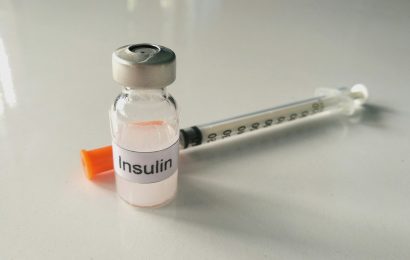Have you looked at test strip prices and thought, “These should be made of gold?” Well, they are made of gold, along with other costly chemicals. But some cost 16 cents apiece; others cost $1 to $2. Why this range? What price is right?
Spurred by some comments from DSM reader John C, I decided to research test strips, and they’re amazing. In fact, I will need two columns to explore them and the issues involved in their best use.
To understand how test strips work, you would need to know quantum mechanics and electrochemistry (whatever that is), and I don’t. Here’s the part I could understand:
Modern strips work by measuring the electrical energy in glucose in the blood. According to an article by Erika Gebel, PhD, in Diabetes Forecast, “Electrochemical test strips, the world standard today, employ enzymes…that convert glucose into an electrical current. That electricity…is read out by the meter as a glucose concentration.” It’s much faster than the old way, which was based on reading a color change, and requires much less blood.
Apparently, working with enzymes is hard. “You want hydration around the enzyme to keep it active, but not too much because that will lead to degradation,” says Selly Saini, the worldwide director of strip products for Johnson & Johnson. “That’s a fine balance.”
Because they use enzymes, strips are delicate. According to Dr. Gebel, exposure to humidity or temperature extremes can damage the enzymes, reducing accuracy. But “strip makers have partly tamed enzymes and increased their life span by incorporating chemicals that stabilize them.”
So the colored patch at the end of the strip includes absorbents to soak up blood and enzymes to turn it into electricity and stabilizers to protect the enzymes. Then the electric current goes down circuits printed on a thin film of gold to the meter, where a computer chip turns it into a numerical reading.
It makes you wonder why strips don’t cost more than they do. But according to David Kliff, founder of DiabeticInvestor.com, “To manufacture the most advanced test strip is no more than 15 cents per strip.” Kliff, who has Type 1 diabetes himself, estimates that manufacturers reap a 70% to 80% profit on strips.
Strip makers don’t think that’s a fair way to look at it. Todd Siesky is a group manager of communications and external relations at Roche, the company that makes Accu-Chek brand products. He says,
The cost of our strips includes their research and development, state-of-the-art production, comprehensive quality processes, verification, clinical and analytical performance studies, continued process improvements, and ongoing compliance to all regulatory and government standards.
Roche’s plant in Indianapolis, turns out over 4 billion test strips a year. And that’s just one manufacturer. Other strip manufacturers are in North Carolina and Florida, so at least they are made in America. You can see a promotional video that shows strip production here.
How accurate are they?
The Food and Drug Administration requires meters to be accurate, but not that accurate. For results at or above 75 mg/dl (4.2 mmol/l): 95% of meter test results must be within plus or minus 20% of the actual blood glucose level. So, if your meter reads 100, that could mean anywhere from 80 to 120.
For results below 75 mg/dl: 95% of test results must be within plus or minus 15 points of the actual blood glucose level. So a reading of 70 means 55 to 85.
That sounds like a wide range, but Donald Powers, PhD, chairman of the technical committee at the International Organization for Standardization says,
Meters are pretty much at the limits of their technology. They’ve tried to make [them] as small and easy to use and painless as possible. There are trade-offs between performance and convenience. Unless these things are painless and convenient, people aren’t going to [use them].
It seems that most or all brands of strips are close to equally accurate. According to Powers, most test strips have similar designs and are made in roughly the same way. Even so, they’re different enough that using one meter’s strips in another meter will likely give an inaccurate result.
Even the same brand of strip will vary from batch to batch and even within the same container. If you read reviews of almost any kind of strip, you’ll see some raters saying they’re excellent and consistent. Others say their numbers are “all over the place.”
Some companies’ products will have good quality for years and then one or several batches will be recalled for inaccuracy. It’s confusing.
The ways we use them also affect accuracy. According to DSM editor Ingrid Strauch, “Improperly used or stored strips are one of the biggest sources of error in home blood glucose monitoring.” Using expired strips or using strips made for a different meter are other sources of error.
Because you never know when you might be getting a bad strip, experienced testers like our reader John C “always keep a second meter for ‘quality control’ if I don’t believe the reading I’m getting. As a serious tester I find this important.”
Then there are the questions of price, why prices vary so much, what insurance will pay for, and what doctors will order. Also, how many do we need? These issues are as complicated as quality.
I’m out of space, though so we’ll have to address these next week. To help out, please let us know your views on meters, strips, and their prices.




